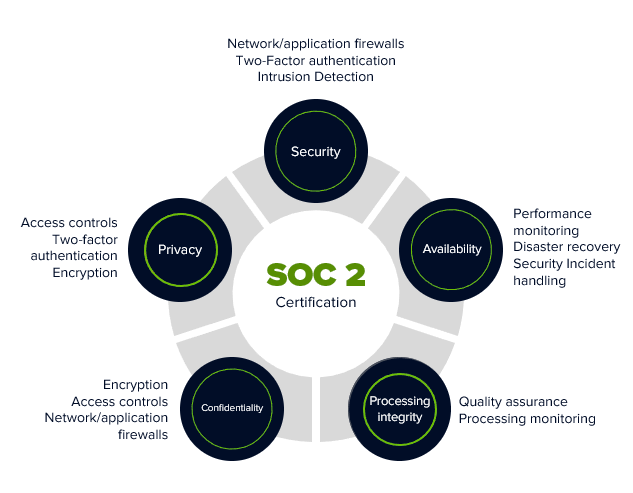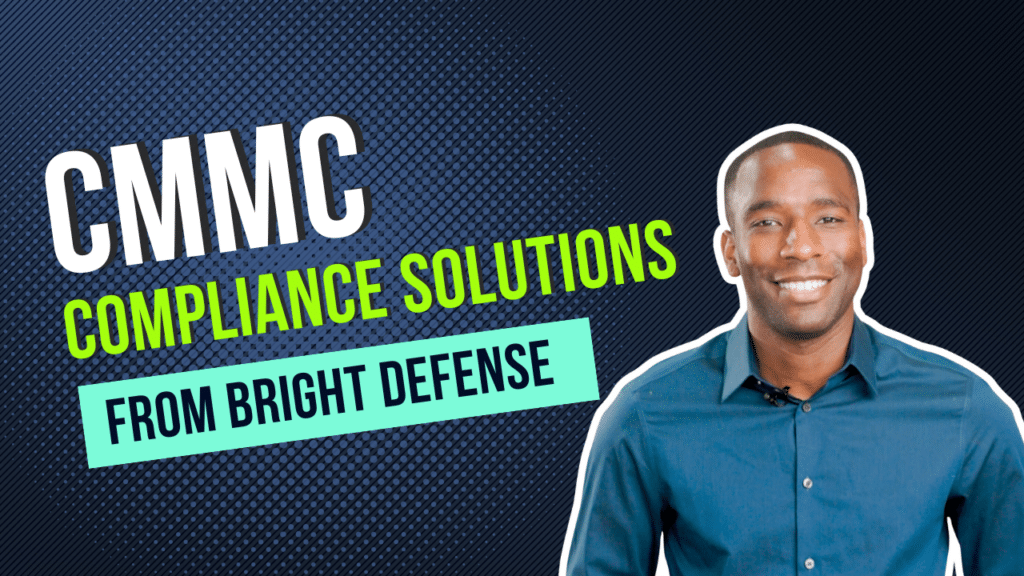
Tim Mektrakarn
March 2, 2025
How Much Does a SOC 2 Audit Cost in 2025?
Short Summary
- Updated for 2025!
- Traditional SOC 2 audit costs can range from $15,000 to over $100,000, depending on the type of audit and overall scope.
- Organizations must evaluate their needs and risks when determining Trust Services Criteria for effective cost management.
- Compliance automation software and expert guidance are strategies that can help reduce SOC 2 audit costs to $5000.
What is a SOC 2 Audit?
A SOC 2 audit is a comprehensive evaluation of an organization’s controls related to security, availability, processing integrity, confidentiality, and privacy. This type of audit is important for businesses that handle sensitive customer information and want to demonstrate their commitment to protecting that data. The SOC 2 audit is based on the Trust Services Criteria, which are established by the American Institute of Certified Public Accountants (AICPA). By successfully completing a SOC 2 audit, organizations can provide assurance to their clients and partners that they have the necessary safeguards in place to protect their data. This can be especially important for SaaS providers, data centers, and other service organizations that handle customer data. Going through a SOC 2 audit can help an organization build trust with its clients and differentiate itself in the market by demonstrating its commitment to data security and privacy.
Understanding the Cost of a SOC 2 Audit
The cost of a SOC 2 audit can vary depending on several factors, including the size of the business, the complexity of its systems, and the type of audit being conducted. For small to medium-sized businesses (SMBs), the cost of a SOC 2 audit can range from $20,000 to $50,000, while for larger businesses, the cost can be over $100,000 for achieving compliance.
Type 1 audits, which evaluate the suitability of the design of controls at a specific point in time, generally cost less than Type 2 audits, which assess the operating effectiveness of controls over a period of time. The cost of a Type 1 audit for SMBs can range from $15,000 to $30,000, while for large businesses, it can range from $30,000 to $50,000. Most organizations pursue a Type 1 audit if they have an immediate need to prove compliance to a potential customer or vendor. Typically a bundled SOC 2 Type 1 and Type 2 audit is more cost effective than purchasing them separately.
The cost of a SOC 2 audit depends on numerous factors, such as:
- The type of audit
- Trust services criteria
- Organization size
- Complexity
- Level of automation deployed
Expenses that should be budgeted for when preparing for a SOC 2 audit include auditor fees, internal resource costs, technology and tool expenses, and any necessary remediation efforts to meet SOC 2 compliance requirements. It’s important for businesses to carefully consider these potential expenses and budget accordingly when planning for a SOC 2 audit.
Benefits of SOC 2 Compliance
- Enhanced Reputation: Achieving SOC 2 compliance can boost an organization’s reputation, showcasing its commitment to data security and privacy.
- Competitive Advantage: In a market where data breaches are becoming increasingly common, being SOC 2 compliant can give businesses a competitive edge.
- Reduced Risk of Data Breaches: With the right controls in place, the likelihood of data breaches is significantly reduced, potentially saving the organization from hefty fines and reputational damage.
Type 1 vs Type 2 Audits
When considering SOC 2 audit costs, it’s essential to differentiate between Type 1 and Type 2 audits. Type 1 audits assess the design of controls at a specific point in time and generally cost between $5,000 and $25,000. On the other hand, Type 2 audits evaluate the effectiveness of controls over a more extended period, typically ranging from $30,000 to $100,000, including the cost of additional security tools. The choice between the two audit types depends on the organization’s needs and the desired level of assurance for its stakeholders.
Given the difference in cost and scope, businesses must carefully weigh the benefits of each audit type. While Type 1 audits may be less expensive, they provide a limited assessment, focusing solely on the design of controls. In contrast, Type 2 audits offer a more comprehensive evaluation, measuring the effectiveness of controls over time and addressing the impact of annual security awareness training. Type 2 audits typically have a minimum look back period of 3 months while 6 months is more common for the first audit followed by annual audits thereafter.
Some companies choose to perform a SOC 2 Type 1 audit initially in order to gain certification, then perform the SOC 2 Type 2 audit after they have a full 12 month period to certify. Ultimately, the choice of audit type should align with the organization’s oversight requirements and risk tolerance.
Trust Services Criteria

Another critical factor influencing SOC 2 audit costs is the Trust Services Criteria, which are a set of requirements that must be fulfilled to achieve a successful SOC 2 audit. These criteria cover aspects such as:
- Security
- Availability
- Processing integrity
- Confidentiality
- Privacy
They may also require regular security awareness training and adherence to data protection policies to remain compliant. Most SMBs will do Security, Availability and Confidentiality. A lot of organizations think they need to do Privacy and Processing Integrity but there are very particular and specific criteria that you need to meet before considering expanding the scope of the audit to include these Trust Services Criteria as the scope of the audit greatly increases.
The number of Trust Services Criteria an organization chooses to include in its audit directly impacts the scope and cost of the SOC 2 audit. More criteria entail a more extensive audit process, which translates to higher costs. If a certain criterion is inapplicable or unimportant, it can be omitted. The remaining smaller subset of trust services criteria will be assessed in this situation.
It’s crucial for businesses to evaluate their specific needs and risks to determine the most appropriate set of criteria for their SOC 2 audit.
Preparation and Readiness Assessments
Preparing for a SOC 2 audit is a vital step towards achieving compliance. Preparation costs and readiness assessments help organizations identify areas of non-compliance and outline the necessary measures to attain SOC 2 compliance, ultimately influencing overall costs.
These assessments may include gap analysis and remediation efforts, both of which play a crucial role in streamlining the compliance process and minimizing expenses, as well as addressing lost productivity.
Internal Readiness Assessments
An internal readiness assessment is a crucial step in evaluating an organization’s preparedness for change or growth. By conducting a thorough evaluation of an organization’s internal capabilities, resources, and processes, leaders can determine the organization’s strength and areas for improvement. This assessment enables organizations to identify potential barriers to success and develop strategies to overcome them. In this section, we will explore the key components of an internal readiness assessment and how it can help organizations better understand their current state and make informed decisions about their future.
Gap Analysis
A gap analysis is an indispensable tool used to pinpoint areas of non-compliance and determine the necessary steps for achieving SOC 2 compliance. This analysis can reveal opportunities for improvement, such as:
- additional resources required to fulfill trust services criteria
- process improvements needed to meet compliance requirements
- training or education needed for employees to understand and adhere to compliance standards
- required implementation of controls to meet all trust services criteria
By identifying and addressing gaps early in the compliance process, organizations can mitigate potential issues down the line, resulting in a smoother audit and reduced costs.
Moreover, conducting a gap analysis can help organizations evaluate their progress towards compliance and adjust their strategies accordingly. By regularly assessing compliance efforts, businesses can ensure they remain on track to meet their SOC 2 audit goals while minimizing expenses related to unforeseen issues and delays.
Establishing Internal Controls
Establishing internal controls involves assessing the maturity of existing controls, identifying potential gaps, and implementing new measures to mitigate risks. This process requires regular evaluations to ensure effectiveness. Security awareness training is essential to educate employees about potential risks and responsible practices. Internal blockers, such as resistance to change or lack of support from management, can hinder the establishment of robust controls and require strategic solutions.
Developing or outsourcing training should be based on the organization’s specific needs and budget. Time and communication management are crucial for coordinating training efforts and ensuring that information is effectively disseminated throughout the organization. Lack of dedicated oversight can lead to inconsistencies in control implementation, so it’s important to designate responsible individuals or teams to oversee the process.
Failure to address these factors can impact the audit preparation process, potentially leading to non-compliance or security breaches. It’s important to actively manage these considerations to ensure a cohesive and effective approach to internal controls and security awareness training.
Remediation Efforts
After identifying gaps in compliance through a gap analysis, organizations must embark on remediation efforts to address and resolve these issues. Remediation efforts may involve implementing necessary changes, such as updating security controls, policies, and procedures, to align with SOC 2 requirements.
It’s crucial for businesses to allocate adequate resources and time to remediation efforts, as they directly impact the overall cost of SOC 2 compliance. By diligently addressing identified gaps and implementing appropriate changes, organizations can significantly reduce the likelihood of costly delays and setbacks during the audit process.
Estimating the Cost of Compliance
Estimating the cost of compliance involves assessing various components and their associated expenses. Readiness assessments, conducted to evaluate an organization’s current compliance status, can range from $5,000 to $20,000. Hiring consultants for guidance and support may cost between $150 to $300 per hour. Legal paperwork, including drafting policies and procedures, can amount to $10,000 to $30,000. Labor costs for employees involved in compliance preparation can vary based on hours spent and salaries. Infrastructure expenses, such as implementing new systems or updating existing ones, can range from $20,000 to $100,000.
Preparing for a SOC 2 audit includes expenses for readiness assessments, consultants, legal paperwork, labor costs, and infrastructural expenses. A Type 1 compliance audit focuses on the suitability of an organization’s systems and controls at a specific point in time and generally incurs lower costs. Type 2 compliance, on the other hand, evaluates the effectiveness of these systems and controls over a period of time, resulting in higher expenses due to the extended duration of the audit and ongoing monitoring and testing. Understanding these differences is crucial when estimating the costs of compliance.
Factors Influencing SOC 2 Audit Costs
Size of the Organization: The number of employees both full-time employees and contractors can increase the costs of the audit due to increased workload and larger sample size required. A SOC 2 audit covers all major aspects of running an organization including HR, Legal, Finance, Operations, Product Development and Executive Management.
Geographical Location: The cost of a SOC 2 audit can vary based on the number of locations and types of data being processed at each location. For example, an auditor will not typically visit an insurance agency with branch offices and sales reps who work on online systems where the servers are centrally located. However, a data center provider which offers colocation and cloud services in multi-geographies will most likely be sampled and an auditor will conduct onsite assessments and evidence collection especially around physical security and availability.
Industry-Specific Requirements: Certain industries may have additional requirements or standards that need to be met, which can influence the overall cost of the audit. Companies that process and store personally identifiable information and need to certify under the Privacy trust service can expect a larger scope of audit.
Previous Audit Findings: If an organization has had previous audits with significant findings or non-compliance issues, the subsequent audit might require more in-depth examination and, therefore, might be more costly.
Auditor Fees and Legal Expenses
Auditor costs and legal expenses are essential components of SOC 2 audit costs. These expenses encompass the fees associated with selecting an auditor and reviewing contracts and agreements necessary for SOC 2 compliance. Most auditors will bill travel expenses on top of their regular service fees.
Understanding these costs and how they impact audit readiness can help organizations better manage their compliance budget and navigate the audit process more efficiently.
Choosing an Auditor
Selecting the right auditor can significantly impact the cost of a SOC 2 audit, as fees vary based on factors such as the auditor’s experience, reputation, and location. To ensure a smooth and cost-effective audit process, organizations should carefully consider their options when selecting an auditor, taking into account the size and complexity of their business, data storage, and documentation requirements.
By engaging an experienced and reputable auditor, businesses can benefit from:
- Expert guidance and support throughout the audit process
- Mitigating potential risks
- Reducing expenses related to addressing unforeseen issues and delays.
Legal Fees
Legal fees associated with SOC 2 compliance can impact audit readiness and the overall cost of the audit. These fees typically involve reviewing agreements with customers, vendors, contractors, and employees to ensure compliance with SOC 2 requirements. Businesses need to account for these legal expenses in their compliance budget and review these agreements annually with each audit to maintain compliance.
By proactively addressing legal requirements and incorporating them into the overall SOC 2 audit costs, organizations can avoid surprises and setbacks during the audit process, enabling a more efficient and cost-effective path to compliance.
Security Tools and Employee Training
Becoming SOC 2 compliant requires a comprehensive approach to security. Necessary security tools include antivirus software ($30-$100 per user per year), password managers ($30-$60 per user per year), vulnerability scanners ($2,000-$5,000 per year), and security incident and event management (SIEM) tools ($5,000-$50,000+ per year). Annual online security awareness training is essential to educate employees on best practices and costs around $25-$50 per user.
Investing in these tools not only ensures compliance but also improves overall security posture by detecting and addressing vulnerabilities, preventing cyber threats, and managing security incidents effectively. Additionally, promoting a security-first culture within the organization creates a mindset that values and prioritizes security, reducing the likelihood of security breaches and data compromises. By incorporating these tools and policies, businesses can demonstrate their commitment to safeguarding sensitive information and maintaining a trustworthy reputation.
Understanding the costs associated with these investments can help businesses budget for SOC 2 compliance more effectively.
Security Tool Investments
Investing in security tools, such as:
- Vulnerability scanners (Rapid7, Qualys, Tenable)
- SIEM tools (Splunk, DataDog, FortiSIEM )
- Anti-virus software (SentinelOne, Microsoft Defender)
- Password managers (1Password, LastPass)
is essential for achieving SOC 2 compliance. These tools enable organizations to proactively identify and address security vulnerabilities, reducing the likelihood of costly breaches and compliance failures. Additional investments may be necessary to cover other native services provided by cloud service providers.
While these investments can add to the overall cost of SOC 2 compliance, they are critical for safeguarding sensitive data and maintaining a strong security posture. Organizations must carefully assess their security needs and allocate resources accordingly to ensure they have the right tools in place to support ongoing compliance.
Staff Training
Staff training is essential for ensuring employees have the knowledge and skills necessary to adhere to security policies and procedures. Training costs can range from $25 per user to $15,000 per session, depending on the content, quality, and training company.
While staff training may represent a significant investment, it is crucial for maintaining SOC 2 compliance and reducing the risk of security incidents. By allocating resources towards employee security training, organizations can empower their staff to make informed decisions and contribute to a culture of security awareness and compliance.
Vulnerability Scanners & Gap Analysis
To assess the need for vulnerability scanning solutions based on the results of the gap analysis, it is essential to consider the potential impact on the security of codebases or hosting infrastructures. The first step is to identify any gaps or weaknesses in the current security measures through a thorough gap analysis. Based on the findings, the next step is to evaluate the potential risks and potential impact of these vulnerabilities on the codebases or hosting infrastructures.
Once the potential risks and impact are identified, it is crucial to consider the cost of vulnerability scanners. While the cost of vulnerability scanners can range from $6000 to $25,000, it is important to weigh this against the potential impact on security. If the gap analysis reveals significant vulnerabilities that pose a high risk to the security of codebases or hosting infrastructures, investing in a vulnerability scanner may be justified to mitigate these risks.
Ongoing Maintenance and Annual Costs
Maintaining SOC 2 compliance requires ongoing maintenance and annual costs, including yearly audits and continuous monitoring of information security management systems. These costs can vary depending on factors such as the size and complexity of the organization and represent a recurring expense necessary for demonstrating ongoing compliance to stakeholders.
Organizations must ensure that their systems are up to date and compliant with the latest standards in order to ensure that their systems are up to date and compliant with the latest standards.
Annual Audit Costs
Annual audit costs are a key component of maintaining SOC 2 compliance. These costs can vary based on factors such as the size and complexity of the organization, the type of audit, and the number of trust services criteria being assessed. In addition to the initial audit costs, organizations should also budget for annual maintenance costs, which typically amount to around 40% of the initial compliance cost.
By accounting for annual audit costs in their compliance budget, organizations can ensure they have the resources necessary to maintain SOC 2 compliance and demonstrate their commitment to data security to stakeholders.
Continuous Monitoring
Continuous monitoring of information security management systems is essential for maintaining SOC 2 compliance and can impact ongoing costs. By regularly observing the performance and security of IT environments, organizations can proactively identify and address potential issues, reducing the risk of non-compliance and costly breaches.
Implementing a robust continuous monitoring program offers several benefits.
- Supports ongoing compliance
- Strengthens the organization’s security posture
- Reduces the likelihood of costly security incidents By investing in continuous monitoring, businesses can demonstrate their commitment to data security and ensure they remain compliant with SOC 2 requirements.
Reducing SOC 2 Audit Costs
Organizations looking to minimize SOC 2 audit costs can employ various strategies, such as implementing compliance automation software and seeking expert guidance to optimize the compliance process. Utilizing tools like SOC 2 automation software can streamline the audit process and potentially reduce costs by automating various tasks and ensuring a more efficient workflow.
Engaging specialized professionals, such as consultants, can also help organizations navigate the complexities of SOC 2 compliance more effectively, potentially reducing costs by providing expert guidance and support throughout the audit process.
By adopting these strategies, businesses can not only reduce SOC 2 audit costs, but also ensure a smoother and more efficient path to compliance.
Tips for a Successful SOC 2 Audit
- Start Early: Begin preparations well in advance of the audit. This gives ample time to address any potential issues or gaps.
- Engage Stakeholders: Ensure that all relevant departments and stakeholders are involved in the audit process. This ensures a holistic approach to compliance.
- Documentation: Maintain thorough documentation of all processes, controls, and procedures. This not only aids in the audit process but also helps in identifying areas of improvement.
- Continuous Improvement: Instead of viewing the SOC 2 audit as a one-time event, treat it as an ongoing process of improvement. Regularly review and update controls and procedures to stay compliant.
Summary
In conclusion, understanding the various aspects that contribute to SOC 2 audit costs is crucial for organizations looking to achieve and maintain compliance. By carefully considering factors such as audit type, trust services criteria, preparation and readiness assessments, auditor fees, legal expenses, security tool investments, employee training, and ongoing maintenance costs, businesses can effectively budget for SOC 2 compliance and proactively address potential challenges. With a comprehensive understanding of these costs and a commitment to continuous improvement, organizations can demonstrate their dedication to data security and protect their valuable assets and reputation.
About Bright Defense
Bright Defense protects our customers from cybersecurity threats through continuous compliance. We work with SMBs, SaaS providers, and MSPs to help them achieve SOC 2, HIPAA, and CMMC compliance. We utilize compliance automation tools to help reduce the burden of evidence collection to reduce overall audit costs and audit fatigue. Our experienced team of cybersecurity experts focuses on a risk-based approach to the compliance journey versus implementing controls to pass a certification.
Bright Defense was able to help a SaaS developer that has been achieving SOC 2 certification since 2018, reduce their annual SOC 2 audit costs by 66%. Bright Defense was able to implement Drata, a compliance automation platform along with our continuous compliance service offering that provides the customer with enhanced visibility, monitoring, and automation, all in all giving them better value for a similar annual expense!
Take control of your cybersecurity journey with Bright Defense’s Continuous Cybersecurity Compliance-as-a-Service packages, tailored to fit every stage of your SMB’s compliance needs. Choose from three comprehensive packages, all powered by a compliance automation platform, to secure your business’s future:
- Sentry: Perfect for DIY, IT-savvy firms with a solid security grasp. Leverage our vCISO expertise for Risk Assessments, Incident Response playbooks, tabletop exercises, BC/DR planning, audit preparation, Internal Audits, and IT Strategy development.
- Guardian: Our full-service option delivers a robust Information Security Program, covering all aspects up to pre-audit preparation. You have the freedom to introduce your auditor, ensuring a personalized compliance journey.
- Defender: The ultimate package, including all Guardian features plus an annual SOC 2 audit by a US-based AICPA firm and monthly vulnerability scans. This comprehensive plan offers unparalleled security assurance.
Embark on your compliance journey with Bright Defense today and secure your business with our expertly designed packages. Your cybersecurity compliance is our priority. Let’s defend your business together!
In addition to continuous compliance, we offer security assessments and remediation, virtual CISO (vCISO) services, and managed security awareness training.
Frequently Asked Questions (FAQs) about SOC 2 Audits and Related Services
1. What is a SOC 2 Audit? A SOC 2 audit is a comprehensive evaluation of an organization’s controls related to security, availability, processing integrity, confidentiality, and privacy. It’s based on the Trust Services Criteria established by the American Institute of Certified Public Accountants (AICPA).
2. How much does a SOC 2 Audit typically cost? The cost of a SOC 2 audit can vary widely. For small to medium-sized businesses, it can range from $20,000 to $50,000, while larger businesses may see costs from $50,000 to $100,000 or more. Type 1 audits generally cost less than Type 2 audits. With a compliance automation software and expert guidance the price of a SOC 2 audit can dramatically reduce to starting at $5,000 for small business.
3. What are the differences between Type 1 and Type 2 Audits? Type 1 audits assess the design of controls at a specific point in time and are generally less expensive. Type 2 audits evaluate the operating effectiveness of controls over a period of time and are more comprehensive and costly.
4. What factors influence the cost of a SOC 2 Audit? Factors include the type of audit, Trust Services Criteria chosen, organization size, complexity, level of automation deployed, and geographical location.
5. What are the benefits of achieving SOC 2 Compliance? Benefits include enhanced reputation, competitive advantage, and reduced risk of data breaches.
6. What are Trust Services Criteria? These are requirements covering security, availability, processing integrity, confidentiality, and privacy. They are essential for achieving SOC 2 compliance.
7. What does preparation for a SOC 2 Audit involve? Preparation includes readiness assessments, gap analysis, establishing internal controls, and remediation efforts to meet compliance requirements.
8. Can any CPA perform a SOC 2 Audit? Yes, any CPA who is independent and accredited by the AICPA can perform a SOC 2 audit.
9. What are the ongoing maintenance and annual costs for SOC 2 Compliance? These include yearly audits, continuous monitoring of information security management systems, and other recurring expenses necessary for ongoing compliance.
10. How can organizations reduce SOC 2 Audit costs? Implementing compliance automation software and seeking expert guidance can help streamline the audit process and potentially reduce costs.
11. What are some tips for a successful SOC 2 Audit? Start preparations early, engage stakeholders, maintain thorough documentation, and treat the audit as an ongoing process of improvement.
12. What services does Bright Defense offer? Bright Defense offers continuous compliance, security assessments and remediation, virtual CISO services, and managed security awareness training.
13. How has Bright Defense helped reduce SOC 2 audit costs for its clients? Bright Defense implemented compliance automation tools and continuous compliance services, reducing annual SOC 2 audit costs by 66% for a SaaS developer client.
14. How much does a cybersecurity audit cost? The cost typically ranges from $700 to $2500, a small investment compared to the potential costs of a cyber attack.
15. How can I get started with Bright Defense for continuous compliance? You can begin your continuous compliance journey with Bright Defense by contacting them for more information and tailored services.
Get In Touch



